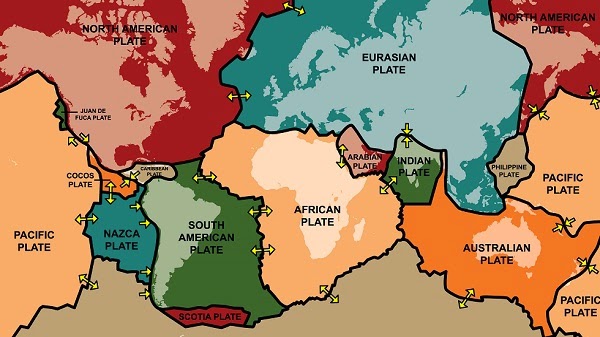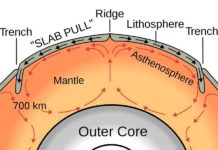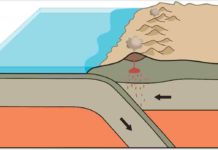
A group of geophysicists is testing the hypothesis that the rate of “supercontinent assembly”—or tectonic plate movement—changes over time.
Study co-author Professor Sergei Pisarevskiy says plate tectonics is the study of the horizontal movement of tectonic plates over the Earth’s surface.
“This is not uniform movement,” he says.
“Sometimes there are periods where there was very quick movement all together globally, and sometimes very slow movements.
“We try to analyse that and to populate the mean angular velocity of the average plate movements on the surface of the earth.”
He has come to the tentative conclusion that the average rate of tectonic plate movement does change.
“Right now for example it’s slower than it was half a billion years ago—but approximately the same as it was one and a half billion years ago,” he says.
“But there are many problems to be resolved before the final answer.
“It’s sort of half guessing I would say at this stage.”
He says beside the uneven level of the same analysis in different countries, he and lead author Kent Condie are addressing various other problems.
One is the inconsistent rate at which plates appear to move, both individually and relative to each other.
“For example Africa moved very slowly for the last few hundred million years, on the other hand India as you probably know moved very fast,” he says.
“When you calculate the average movement … of the continents of the earth you cannot just average the movement, the speed of a continent like Africa and some very small block like Madagascar for example.
“They must be weighted, so we normalise the speeds by the area of that particular continental block.”
“When talking about the average speed, we also found some quieter periods, not exactly the periodicity but some maximums and minimums.”
Another problem is the way in which evidence tends to deteriorate over time with more recent “overprints” creating statistical “noise”.
“The older the rocks, the less information you will have,” he says.
“This noise increases—going back in time it’s more difficult to extract this information.”
They are also contending with the phenomena of “passive margins” between plates.
One of these is thought to exist beneath the ocean south of Australia—it shows little or no movement for at least a billion years.
“There are no major tectonisms here or seismicity, it’s just accumulations of sediments mostly,” he says.
More information:
Kent Condie, Sergei A. Pisarevsky, Jun Korenaga, Steve Gardoll, “Is the rate of supercontinent assembly changing with time?”, Precambrian Research, Available online 4 August 2014, ISSN 0301-9268, dx.doi.org/10.1016/j.precamres.2014.07.015
Note : The above story is based on materials provided by Science Network WA










